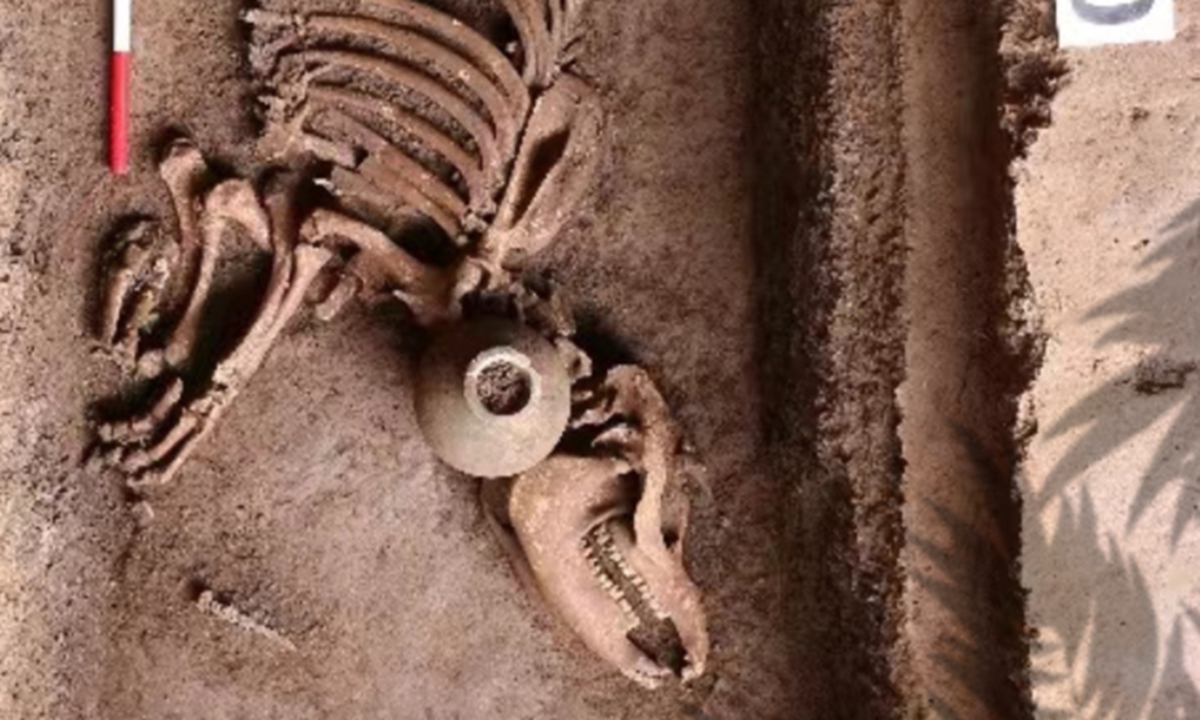
Tapir from more than 2,000 years ago was found in the Han Dynasty imperial tombs located in the Bailuyuan area of Baqiao District, Xi'an, Northwest China's Shaanxi Province.Photo: web
It had the shape of a pig, the nose of an elephant, the eyebrows of a rhinoceros, and the tail of a cow. This "magical creature" from more than 2,000 years ago was found in the Han Dynasty imperial tombs located in the Bailuyuan area of Baqiao District, Xi'an, Northwest China's Shaanxi Province.
From Monday to Wednesday, the 4th Chinese Archaeology Conference was held in Xi'an. Archaeologists shared their new findings on animal archaeology from the tomb of Emperor Wendi of the Western Han Dynasty (206BC-AD25). In total, 23 animal burial pits were excavated, revealing 11 different species of animals. One of the discoveries allowed people to learn about the ancient "magical animal" - the tapir. It was also known as the "dream-eating beast" because it was believed to consume nightmares. In ancient Chinese tombs, the Asian tapir was commonly used as a guardian animal.
In burial pit "K10," a complete skeleton of a large animal measuring over two meters in length was found. The skull had two teeth that connected to form a ridge, and there was a concave defect on its scapula. Animal archaeologist Hu Songmei believed these were characteristics unique to the tapir. Further measurements and analysis using ancient DNA confirmed that this animal was the Malayan tapir, also known as the Asian tapir. It was found in Malaysia, Sumatra, and Thailand and was the largest species of tapir.
Although tapirs are now extinct in China, this discovery of a well-preserved tapir skeleton from the Han Dynasty provides valuable physical evidence that tapirs of the odd-toed ungulate family still existed in northern China during that time.


